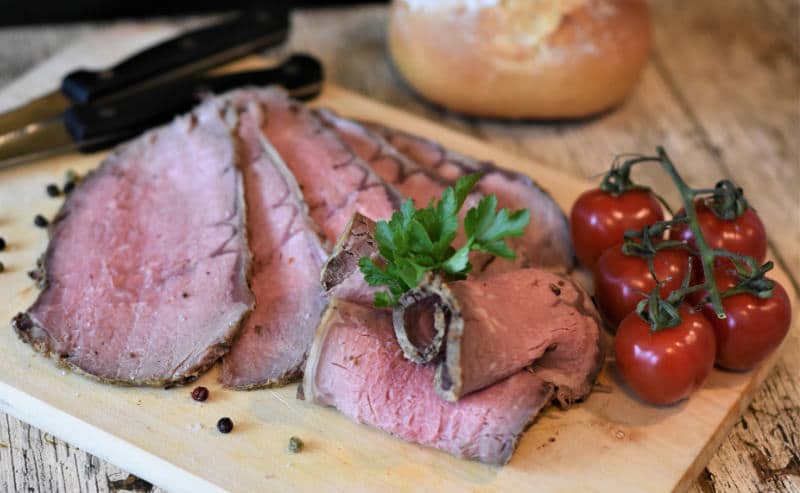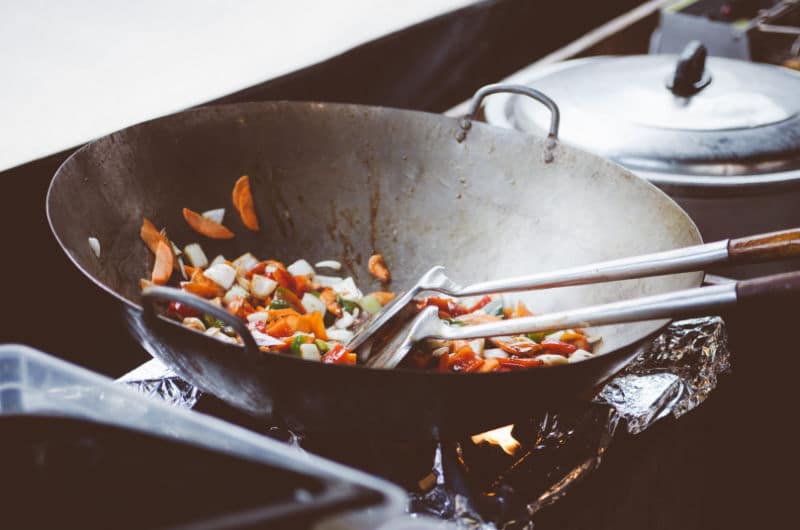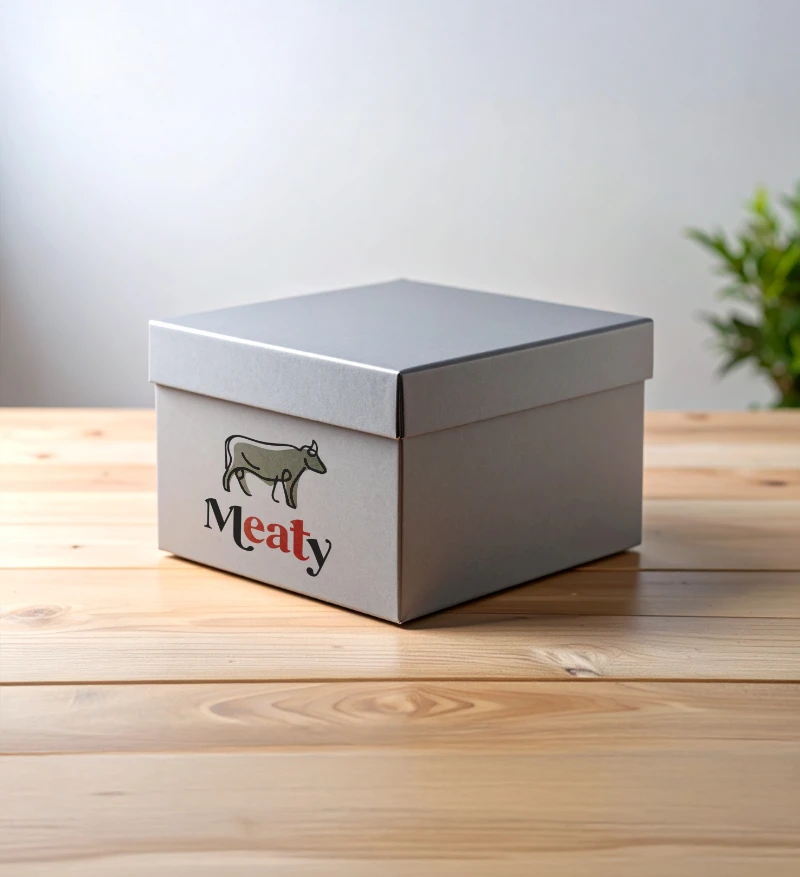How to cook beef
Each piece of beef lends itself to different cooking methods. To get the most out of your meat, it's best to know your options when you put on your apron.
Grilling, roasting, braising, pan-frying, sautéing, etc... so many names - which will undoubtedly speak to you - but which can sometimes be a source of confusion.
The aim of this article is to present the different types of cooking, and to suggest the right cuts for each method. In addition, some essential tips will be given on how to cook meat successfully.
Here are the typical beef cooking methods covered in this article:
Grilled beef

Beef is cooked on a grill or over hot coals. Certain accessories, such as griddles, planchas or pans with grooves, can be used for this purpose, the key being to ensure airflow between the piece and the heating element.
Suitable cuts: prime rib, onglet, steaks
Roast beef

Roasting meat means cooking it uncovered over a high heat to obtain a crust or gilding on the outside. This method of cooking allows the beef to retain its juicy texture. Note that you can also use the oven to roast your beef.
Suitable cuts: roastbeef, aiguillette baronne.
Braised/mixed beef

Typical of winter evenings, this cooking method lends itself perfectly to stews or stir-fries. It involves cooking slowly and evenly, covered, in an aromatic liquid. It's essential to sear your pieces before plunging them into the aromatic liquid.
Suitable cuts: slow-cooked roast, stew, cheek, baronet steak, tongue, tail, slow-cooked chuck, shank, flat rib. Generally speaking, these are all cuts of beef that lend themselves to long cooking.
Pan-fried beef
It's very similar to simmering. However, pan-frying is done exclusively in the oven. In pan-frying, the meat is covered and immersed in an aromatic garnish to prevent it from drying out. As with simmering, it is essential to sear the meat before baking.
Suitable cuts: aiguillette baronne, simmering roast, cheek, stew.
Low-temperature beef
Low-temperature cooking is the cooking method of choice for tender cuts of meat. It involves prolonged cooking in the oven, without liquids. Make sure your oven temperature does not exceed 80° C.
Suitable cuts: tenderloin roast, roast beef, flat rib, baronet steak.
Fried beef

One of the most widely used cooking methods, deep-frying involves cooking pieces of meat by rapidly immersing them in a fatty liquid (typically vegetable oil). The result is crispy on the surface and tender on the inside. To fry your meat, it's essential to bring your fat bath up to high temperature before plunging the meat into it.
Suitable cuts: leg steak, bourguignonne.
Sauteed beef

A typical Asian cooking method, curry involves cooking your meat over a high heat, uncovered. To get the most out of your curry dishes, be sure to shake your pan regularly. As long as you use the right accessories, you don't need to cook your meat in a lot of fat.
Suitable cuts: leg steak, bourguignonne, rump steak
Beef stew

The boiled meat is cooked in a large quantity of water, which can be flavored with spices or herbs to suit individual tastes. This is a liquid cooking method, as it does not involve cooking with "thick" broth.
This cooking method is suitable for all cuts that are not necessarily tender, such as pot roast, tongue and shank.
Extra: vacuum-cooking beef
For a long time the preserve of chefs, sous-vide cooking has been democratized thanks to vacuum cooking machines for domestic use. Considered by many enthusiasts as the only way to achieve perfect cooking results, sous-vide cooking offers numerous advantages.
The operation of such a firing can be summarized in 3 steps:
- Vacuum packing of food
- Cook according to set time and temperature. Depending on the piece and the desired result, these data are specified and easy to consult.
- Colouring food to give it an attractive appearance
The advantages of this type of cooking are manifold:
- Cooking is perfect and even. What's more, it's easy to control because there's little risk of overcooking.
- All cuts of meat are tenderized, even those of second choice. The gentle heat prevents any thermal shock that might cause the fibers to shrink. In addition, enclosing the piece protects it from drying out.
- Enclosing the product in a container preserves its flavors better.
- Less vitamins are lost and no burnt (harmful) parts are formed.
- This cooking method is ideal for entertaining guests. Simply hold the pieces in the cooker and sear them quickly before serving.
However, there are a number of drawbacks:
- Cooking times are always long. So you need to plan your meal and be patient.
- The appearance of the meat at the end of cooking is unappetizing and requires an additional step before serving (browning).
- This type of cooking requires expensive technological equipment, and produces plastic waste.
General cooking tips for beef
In addition to the specifics of each cooking method, here are a few valuable tips to help you get the most out of your meat:
- Don't cook meat straight from the fridge. Let it rest in the air for 30 minutes to 2 hours, depending on the size of the piece. Cooking a cold piece will affect tenderness, and in the case of thick cuts, will make even cooking difficult.
- Some people recommend not salting the meat in advance, as this would absorb the juices and dry out the meat.
- Do not open (cut, puncture) meat during cooking. This will allow the juices to escape.
- Do not eat the meat immediately after cooking. Instead, let the meat rest for a few minutes, wrapped in aluminum foil, to allow the juices and temperature to distribute throughout the piece.
- Do not add pepper before or during cooking. The pepper will burn and release its aromas. To make the most of the pepper, apply it just before eating the meat.
For perfectly controlled cooking, use a temperature probe and observe the following core temperatures:
| Blue | Rare | Medium | Well done |
|---|---|---|---|
| 45° - 50° | 50° - 55° | 55° - 60° | > 60° |
Conclusion
Cooking meat is a rich and complex art, whose simple techniques can nevertheless prove highly effective. Depending on your personal style, all you need to do is choose a cooking method that's right for the cut, in the knowledge that there's no objectively better choice.
On the other hand, it's important to note that, just as a poor-quality morsel will hardly make an exquisite dish, inadequate cooking has the power to spoil any morsel, whatever its quality.
If you enjoyed this article on cooking techniques, don't hesitate to consult our article on meat preservation methods.

